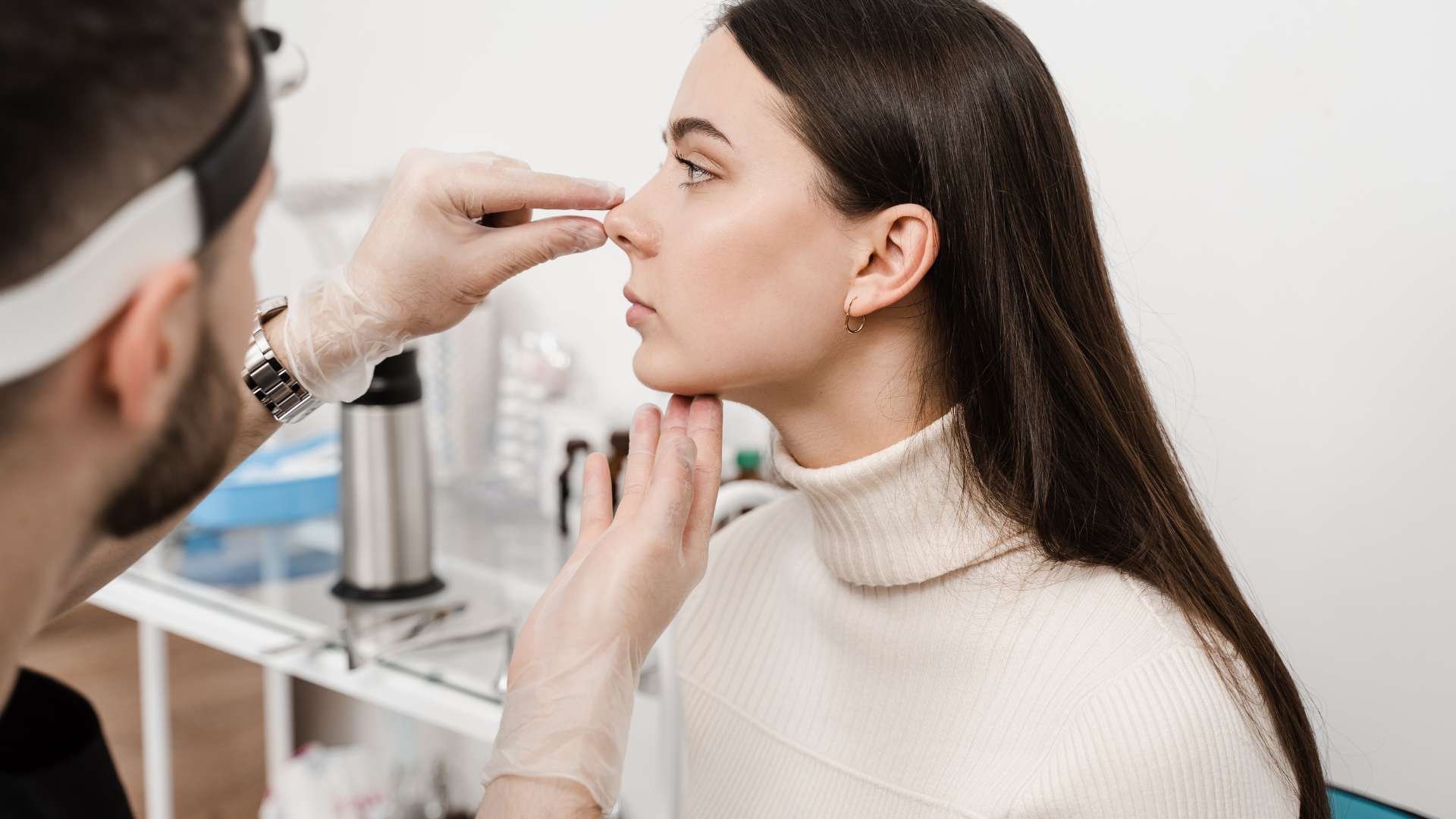Am I Too Young—or Too Old—for a Facelift? Age Factors Explained
May 19, 2025

Patients often ask us at DrStile.com: “Am I Too Young—or Too Old—for a Facelift?” The American Society of Plastic Surgeons reports most facelift patients chose the procedure between 55 and 69 years old in 2022. A new trend shows younger people now opt for this procedure too.
The “magic number” 40 surprises many of our patients. The “Diamond Mini Lift” has become a popular birthday gift choice. Your skin’s condition matters more than your actual age. The Australian Society of Plastic Surgeons found that patients who get facelifts in their 40s see longer-lasting results compared to those who wait until their 50s or later. Dr. Stile believes each person’s ideal timing depends on their aging signs, health status, and personal readiness.
What does ‘too young’ or ‘too old’ for a facelift really mean?
Patients at DrStile.com often ask “Am I Too Young—or Too Old—for a Facelift? Age Factors Explained.” The truth? Your birth date doesn’t tell the whole story. Let’s look at what age really means as you think about this life-changing procedure.
Why Doesn’t Age Alone Decide Candidacy?
People believe there’s a magic number to get a facelift. This isn’t true. “While age is a consideration, it’s not the sole determinant of facelift candidacy,”. Your overall health and skin condition are much more important factors.
Most facelift patients fall between 40 and 60 years old. This doesn’t mean you can’t have the procedure if you’re younger or older. Your unique anatomy and genetics determine the right time for a facelift.
Dr. Stile says good candidates for facelift surgery are people who:
- Have good physical health without medical conditions affecting healing
- Don’t smoke
- Have realistic expectations about results
- Show signs of facial aging but still have some skin elasticity
The decision should focus on your personal goals, not just your age. At Stile Aesthetics, we assess each patient’s specific concerns rather than focusing on age alone.
How Does Skin Condition Matter More Than Years?
Your skin’s condition matters more than your age when planning a facelift. This is something many patients at DrStile.com find out during consultations.
We look at skin elasticity—your skin’s ability to “snap back” after stretching. “Facelifts are most effective for those who still have some skin elasticity. This allows for smoother, more natural-looking results after the procedure”.
Each person ages differently based on:
- Sun exposure
- Diet
- Smoking history
- Genetics
- Overall health
Mid-forties to early-fifties women generally have skin elasticity that creates optimal facelift results. Many people in their sixties and seventies who managed to keep their health and fitness also see excellent outcomes.
Dr. Stile at Stile Aesthetics explains how skin laxity affects your face’s response to tightening. Think of it like this: stretchy fabric holds its new shape better than worn-out material. Skin with remaining elasticity creates more natural, longer-lasting results.
What Does DrStile Say About Age and Facelifts?
Dr. Stile’s approach to facelift age questions at DrStile.com is straightforward.
“There is no ‘right’ age to get a facelift. Each person ages differently, and only you can decide when your signs of aging have become bothersome”. This patient-centered approach means numbers alone don’t make you “too young” or “too old.”
Dr. Stile says the best time for a facelift is when:
- You feel it would boost your self-esteem and confidence
- Your aging signs bother you personally
- You’re healthy enough for surgery
- You have realistic expectations
On top of that, Dr. Stile points out that results last longer when performed earlier after aging occurs. “The sooner the procedure is done once aging has occurred the longer lasting and more natural it tends to be”.
For younger patients (under 40), DrStile suggests non-surgical or minimally invasive treatments first. These might include dermal fillers or FaceTite for mild to moderate skin laxity.
Facelift results typically last 7-10 years. Some patients get their first facelift in their mid-40s to early-50s and then a second “update” in their 60s.
Your consultation at Stile Aesthetics in Las Vegas will assess your candidacy based on your facial structure, skin condition, and personal goals—not just your birthday.
Note that the real question isn’t about being too young or old for a facelift. Ask yourself if a facelift fits YOUR needs right now, based on your skin’s condition and personal goals.
Is your 30s the right time to consider a facelift?
Patients in their 30s frequently ask us at DrStile.com about the right time to get a facelift. “Am I Too Young—or Too Old—for a Facelift? Age Factors Explained” comes up almost daily from this age group. Let’s learn about whether your 30s might be the perfect time for this procedure.
Do Mini Facelifts Work for Younger Patients?
Mini facelifts prove effective for younger patients with specific concerns. Our team at Stile Aesthetics sees great results with mini-facelifts that target your lower face and neck area. The procedure takes less time and requires minimal invasion compared to full facelift surgeries.
Mini facelifts give several advantages to patients in their 30s:
- Your skin’s elasticity and resilience lead to better outcomes
- Your overall health helps you recover faster
- The subtle changes keep your natural look intact
Dr. Stile suggests mini-facelifts to patients who show early signs of facial sagging. Patients with elastic skin and defined bone structure respond best to these procedures.
A mini facelift done in your 30s can last 5-10 years based on your skin quality and lifestyle choices. Las Vegas patients who want to fix minor jowls or loose skin around their cheeks and jawline find this option particularly helpful.
Can Fillers Delay a Facelift?
DrStile.com’s younger patients often ask about using fillers to postpone surgery. The answer brings good news – fillers can indeed push back the need for a facelift.
Dermal fillers use a special gel injected into your face to add volume and fill the skin. This helps reduce sagging and wrinkles. Younger patients between their 30s and early 40s can maintain their youthful appearance through strategic filler use.
Dr. Stile recommends fillers to patients with minimal wrinkles and sagging. These treatments cost less than facial surgery initially. Stile Aesthetics patients sometimes use fillers as a preview of potential surgical results.
The long-term costs of fillers might exceed surgery since you need repeated treatments. Fillers typically last from 6 months to 2 years.
What Are the Risks of Early Surgery?
Early facelift surgery brings specific risks. Dr. Stile urges caution for patients in their 30s who think over this option.
Your face might not need surgery yet. Less invasive options might work better if you have minimal skin looseness and early aging signs. Dr. Stile suggests trying non-surgical treatments first.
Your face continues aging after surgery. Facial plastic surgeons note: “Anyone younger than 50, you have to think twice about creating scars that are permanent, knowing they will continue to age and probably need a secondary procedure down the road”.
Chasing minimal changes might lead to disappointment when things naturally loosen again after healing. Our team at Stile Aesthetics in Las Vegas ensures you understand these factors.
How Social Media Affects Younger Patients
Social media has transformed younger patients’ views on facial aging. This trend stands out clearly at DrStile.com.
Research shows 95% of patients looking into cosmetic procedures check online sources, including social media. Instagram and Snapchat play a big role in creating “selfie culture” where people share photos constantly.
Filters and photo editing create new challenges. Selfie angles distort facial features and lead to unhappiness with appearance. Medical experts report “snapchat dysmorphia” where patients try matching their filtered images.
Research links Instagram time directly to cosmetic procedure desires. Stile Aesthetics team discusses social media habits with patients to understand their goals better.
Dr. Stile emphasizes realistic expectations. “Just because a particular look worked for one person doesn’t mean it’s the best option for you,” remains crucial advice for our Las Vegas patients.
Is 40 the best age to get a facelift?
Many visitors to DrStile.com ask about facelift age factors, specifically: “Is 40 really the sweet spot for a facelift?” Our article “Am I Too Young—or Too Old—for a Facelift? Age Factors Explained” explores why your 40s might be the perfect time for this procedure.
Why Do Many Patients Choose Facelifts in Their 40s?
The numbers tell an interesting story – people are getting facelifts much earlier now. A plastic surgeon points out, “When I started my practice in 1997, the average age of someone seeking facelifts was 56; now it’s 47“. We’ve noticed this trend at Stile Aesthetics in Las Vegas too.
Patients who opt for facelifts in their early-to-mid forties tend to get better, longer-lasting results than those who wait. Here’s why:
Your skin’s elasticity peaks in your 40s. This creates natural-looking results without dramatic changes. Your body recovers faster at this age too.
The surgery doesn’t need to be as extensive. Your muscles and tissues haven’t sagged as much yet.
The results tend to last longer. Patients in their 40s often enjoy their results for 10-15 years, and they need fewer touch-ups.
Our 40-something patients at DrStile.com take a more proactive approach to aging. They like subtle improvements that help them age gracefully.
How Does Collagen Loss Start After 25?
Your body starts losing collagen way before wrinkles appear. This protein makes up 75% of your skin’s dry weight. After age 25, we lose about 1% of our collagen each year.
Women lose even more collagen during menopause – up to 30% in just the first five years. After menopause, this loss continues at about 2% yearly.
Signs of collagen loss include:
- Drier, more dehydrated skin
- More visible wrinkles and expression lines
- Less fullness and plumpness
- More sagging and less firmness
- Decreased elasticity
We explain to our Stile Aesthetics patients that this gradual loss shapes how your face ages. By 40, most people see noticeable changes but still have enough elasticity to get excellent surgical results.
Is 40 Too Young For A Facelift?
DrStile.com’s facelift patients typically range from 40 to 60 years old. This timing works well because you’ll notice changes that need attention, yet your skin still recovers effectively.
A mini-facelift suits many 40-year-olds perfectly. This less invasive procedure uses smaller cuts to fix early jowls and mild sagging. Dr. Stile recommends this approach to Las Vegas patients who want subtle improvements with quick recovery.
Most people in their 40s try non-surgical options first. Research shows that over 50% of women getting mini-facelifts previously used injectables or laser treatments. These patients looked 4 years younger after non-invasive treatments but almost 10 years younger after facelift surgery.
Money matters too. Surgery costs more upfront than non-surgical treatments, but patients who got facelifts in their forties had already spent around $7,000 on less invasive procedures. Surgery often saves money in the long run.
What Does Stile Aesthetics Recommend For 40-Somethings?
Our Las Vegas practice tailors recommendations to each patient’s needs. Dr. Stile often suggests these options for patients in their 40s:
SMAS or Deep Plane facelift: This technique fixes sagging jowls, loose skin, and mid-face sagging. Results typically last 10-15 years.
Mini facelift: This less invasive option works great for early aging signs, using smaller incisions to target specific areas. Results usually last 5-10 years.
Fat transfer: Dr. Stile often adds fat grafting to facelifts to restore volume in “hollow” areas. This creates natural, youthful contours.
Dr. Stile believes the right time for a facelift depends on your confidence and self-esteem needs. Your physical condition and personal goals matter more than your age.
Getting a facelift in your 40s can work better because your face still produces enough collagen and elastin. This helps maintain youthful contours after surgery. The results look more subtle and natural compared to later interventions.
What happens if you wait until your 50s or 60s?
Patients come to Dr. Stile at Stile Aesthetics to ask if they should have waited for their facelift. Our article “Am I Too Young—or Too Old—for a Facelift? Age Factors Explained” answers common questions about the right age to get a facelift, especially for people in their 50s and 60s.
Is 70 Too Old for Facelift Surgery?
The answer is no – you’re not too old for a facelift at 70 if you’re healthy. Research shows that properly screened older patients have no higher risk of complications than younger patients. The oldest patient from these studies was 83 years old.
Your health matters more than your age. We check each patient’s medical history and current health status at DrStile.com in Las Vegas before surgery. Good candidates must be healthy enough to handle anesthesia and recovery, whatever their age.
Most older patients who want facelifts stay active and maintain good health. Research shows that older patients smoke less compared to younger ones (3.4% versus 8.5%). This helps them heal better after surgery.
Dr. Stile tells his patients that a good facelift can make them look 10-15 years younger. “If a 75-year-old patient looks 65, that’s terrific, but they’re not going to look 50—it doesn’t work that way”.
How Menopause and Estrogen Loss Affect Skin
Menopause changes your skin in ways that affect facelift results. Middle-aged women make up nearly half of all plastic surgery patients, and they experience menopause.
Estrogen levels drop during menopause and affect skin these ways:
- Reduced collagen and elastin production
- Thinner, drier skin
- Less skin moisture
- Less protection from damage
Dr. Stile at Stile Aesthetics understands that estrogen helps maintain skin thickness. Skin sags more easily when these levels drop. Many women choose to get facelifts during or after menopause.
Surgeons at DrStile.com consider hormone changes while planning your facelift, especially those related to menopause.
Combining Facelift with Eyelid Surgery at 60
Stile Aesthetics patients often choose to combine procedures after turning 60. The American Society of Plastic Surgeons notes that facelifts, blepharoplasties (eyelid surgery), and neck lifts top the list for patients over 70.
Eyelids show aging signs first because of their delicate tissues. This combination approach works well because:
- It tackles multiple aging signs at once
- Recovery happens in one period
- Surgical costs can be lower
Many patients in their 60s at DrStile.com in Las Vegas prefer this combined approach. Their results look more balanced and natural.
Facelift Revision in Older Patients
Some patients need a second facelift as they age. Studies show patients who had non-invasive treatments between two facelifts typically waited 14 years for their second surgery.
Revision facelifts need more expertise. Skin becomes stiffer and harder to work with if you’ve had treatments like radiofrequency between surgeries. Dr. Stile at Stile Aesthetics has extensive experience handling these challenges.
Many patients get their second facelift in their 70s. They usually had their first one around 55 or 60 and return after a decade. These patients often feel very satisfied with their results.
Dr. Stile believes clear communication between surgeon and patient guides the best outcomes.
What signs show you’re ready for a facelift?
Your mirror tells the truth about aging signs. DrStile.com guides patients through clear indicators in “Am I Too Young—or Too Old—for a Facelift? Age Factors Explained.” Let’s explore what your face reveals about timing.
What are the top signs you need a facelift?
People who look older than they feel often need a change. Dr. Stile at Stile Aesthetics sees these telltale signs every day:
- Jowls and square face shape: Your face transforms from oval to square as tissues start to droop
- Sagging skin on lower face: The jawline loses definition and needs more than just fillers
- Deep nasolabial folds: Lines running from nose to mouth become more pronounced with age
- Vertical neck bands: These muscle bands usually require surgical correction
- Tired or angry look: Your expression seems upset even when you’re feeling great
A simple cheek pinch test reveals a lot. You might be ready for a facelift if pulling the skin gently toward your ears creates your desired look.
How can you test your skin elasticity before a facelift?
Good facelift results depend on skin elasticity. DrStile’s Las Vegas office offers these quick tests:
The snap test shows how fast skin rebounds. A quick pinch under your eyes should spring back immediately. Slow recovery points to elasticity loss.
The pinch test works on your cheek, arm, or abdomen too. Slower recovery indicates reduced elasticity. Research confirms elastic recovery decreases as we age, making this test valuable for surgical planning.
When should you switch from non-surgical to surgical lift?
Surgery becomes the better option when:
Fillers don’t work as well anymore. Dr. Stile sees patients needing more frequent filler treatments to maintain results. This often leads to an unnaturally full upper lip and chin area.
Non-surgical treatments stop delivering ideal results. Patients reach a point where more filler brings minimal improvement.
Research shows many people in their 40s choose surgery after trying other options. The math makes sense too – multiple non-surgical treatments eventually cost more than one surgery.
How does your lifestyle affect facelift longevity?
Daily habits substantially influence your facelift’s lasting power:
Excessive sun exposure breaks down collagen and elastin, accelerating skin aging. Stile Aesthetics recommends daily SPF 30+ sunscreen application.
Smoking decreases blood flow and speeds up aging. Dr. Stile requires patients to quit smoking 4-6 weeks before and after surgery.
Diet, sleep, and stress play crucial roles. Poor nutrition deprives skin of essential vitamins. High stress releases cortisol that breaks down collagen.
Healthy lifestyle choices can extend your facelift results by several years.
How do you know if you’re emotionally and physically ready?
Curious about facelift surgery but unsure if your age is right? Many patients at DrStile.com want to know if they’re emotionally and physically ready in “Am I Too Young—or Too Old—for a Facelift? Age Factors Explained.” Let’s look at what makes someone truly ready for this transformative procedure.
Am I a candidate for facelift surgery?
The best facelift candidates share specific traits whatever their age. Dr. Stile at Stile Aesthetics in Las Vegas looks for patients who are:
- Physically healthy without medical conditions that might affect healing
- Non-smokers or willing to quit before surgery
- Mentally healthy with realistic expectations about results
- People with some remaining skin elasticity
Your overall health carries more weight than your actual age. Dr. Stile performs a complete physical assessment at Stile Aesthetics to ensure you’re healthy enough for surgery.
Does smoking affect facelift results?
Smoking severely impacts facelift outcomes. Nicotine damages small blood vessels in your face and reduces blood flow by 30-40%. This creates significant risks:
- Slower healing and higher infection rates
- Risk of tissue death (necrosis) becomes 12 times higher
- Wider, more visible scars
- Damage to collagen and elastin
Dr. Stile requires Las Vegas patients to quit smoking at least 6-8 weeks before surgery and with good reason too. Some surgeons even conduct nicotine tests before proceeding.
Downtime for facelift at different ages
Recovery varies based on your age, health, and procedure type. At Stile Aesthetics, most patients can:
- Return to normal activities in 1-2 weeks
- Start exercise after 2-4 weeks
- Attend important events after about 3 months
Older patients might need extra recovery time. Better healing and results come from following Dr. Stile’s pre and post-surgery instructions.
Facelift consultation questions to ask
Your DrStile.com consultation should include these essential questions:
- Are you certified by the American Board of Plastic Surgery?
- How many years of training have you had?
- How many facelifts do you perform yearly?
- Can I see before-and-after photos?
- What technique do you recommend for me?
- How long will my results last?
- What are the risks and possible complications?
Note that facelift surgery should be your personal choice, not something to please others or match an ideal image.
Conclusion
Your birth certificate matters nowhere near as much as your overall health and skin condition when considering a facelift. This piece from DrStile.com shows why age shouldn’t limit your options.
Good candidates exist at all but one adult age group. Skin elasticity, facial structure, and personal goals matter more than numbers. Patients who opt for treatment in their 40s might see longer-lasting results. Healthy patients in their 70s can achieve remarkable changes with proper screening.
Dr. Stile believes the perfect timing comes down to your emotional and physical readiness. Each person’s timeline differs. Some patients notice jowls or sagging skin as early as their late 30s. Genetics and lifestyle choices help others maintain firm skin into their 60s.
A personal consultation at our Las Vegas office will help determine your specific needs and options. Dr. Stile will assess your skin quality, facial structure, and health status to create recommendations just for you.
Your lifestyle choices affect your results at any age. Sun protection, quitting smoking, healthy diet, and good skincare routines help maintain your results for years. These habits make a difference whether you’re 45 or 75.
The path to facial rejuvenation starts with honest self-assessment. Ask yourself: Do I look older than I feel? Has my face’s shape changed? Do non-surgical treatments no longer give me the results I want? Your answers reveal more about your readiness than any birthday.
Note that a facelift is an investment in yourself. Dr. Stile at Stile Aesthetics brings board-certified expertise to each procedure and ensures natural-looking results at any age.
The real question isn’t about being too young or too old. Focus on finding the right procedure at the right time with the right surgeon for your unique needs.
TAKE THE FIRST STEP
Want to learn more about what you can expect from a facelift? Please fill out the form on this page to request an in-person consultation, and one of our knowledgeable medical staff members at Stile Aesthetics will reach out to you promptly. You can also call our office directly at (702) 551-6603.
Stile Aesthetics serves Las Vegas, NV & Surrounding Areas.
*Individual results may vary
FAQs
Q1. At what age should I consider getting a facelift? There’s no specific “right” age for a facelift. Most patients are between 40-60 years old, but good candidates can be found at almost any adult age. Your skin condition, facial structure, and personal goals are more important factors than your actual age.
Q2. How long do facelift results typically last?
Facelift results generally last about 7-10 years, though this can vary. Patients who get facelifts in their 40s often enjoy results for 10-15 years. However, your face will continue to age naturally after the procedure.
Q3. Can non-surgical treatments like fillers replace the need for a facelift?
Fillers can effectively delay the need for a facelift in many cases, especially for younger patients with minimal wrinkles and sagging. However, they typically last only 6 months to 2 years and may eventually cost more than surgery due to repeat treatments.
Q4. How does smoking affect facelift results?
Smoking significantly impacts facelift outcomes by reducing blood flow, slowing healing, increasing infection risks, and damaging collagen and elastin. Most surgeons require patients to quit smoking at least 4-6 weeks before and after surgery for better results.
Q5. What are the key signs that I might be ready for a facelift?
Key indicators include the development of jowls, sagging skin on the lower face, deep nasolabial folds, vertical neck bands, and a persistently tired or angry look. If non-surgical treatments no longer give you the desired results, it might be time to consider a facelift.




